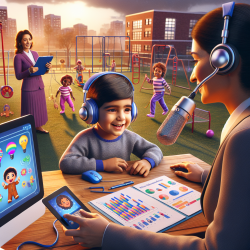Introduction
In today's digital age, the prevalence of online hate is a growing concern, especially among adolescents. The study "Associations between Bystanders and Perpetrators of Online Hate: The Moderating Role of Toxic Online Disinhibition" sheds light on the intricate relationships between being bystanders and perpetrators of online hate, and the role toxic online disinhibition plays in this dynamic. This blog aims to explore these findings and offer insights into how practitioners can leverage this knowledge to improve outcomes for children.
Understanding the Research
The study involved 1480 students aged 12 to 17 and revealed several key findings:
- There is a positive association between being bystanders and perpetrators of online hate.
- Toxic online disinhibition is linked to an increase in online hate perpetration.
- Toxic online disinhibition moderates the relationship between being bystanders and perpetrators of online hate.
These findings highlight the complex interplay between witnessing online hate and participating in it, underscoring the need for targeted interventions.
Implications for Practitioners
For practitioners working with children, understanding these dynamics is crucial. Here are some strategies to consider:
- Education and Awareness: Educate children about the impact of online hate and the importance of empathy and respect in digital interactions.
- Encourage Critical Thinking: Teach children to critically evaluate online content and recognize the influence of toxic online disinhibition.
- Promote Positive Online Behavior: Encourage children to be upstanders rather than bystanders, promoting positive interactions online.
- Develop Intervention Programs: Implement programs that address the root causes of online hate and equip children with the tools to resist engaging in such behaviors.
Encouraging Further Research
While this study provides valuable insights, there is still much to learn about the factors influencing online hate. Practitioners are encouraged to engage in further research to explore:
- The role of personal traits, such as impulsivity and empathy, in online hate perpetration.
- The impact of social norms and peer influence on children's online behavior.
- Effective strategies for reducing toxic online disinhibition and promoting self-regulation.
Conclusion
Understanding the associations between bystanders and perpetrators of online hate, along with the moderating role of toxic online disinhibition, is essential for developing effective interventions. By leveraging these insights, practitioners can help create safer online environments for children, fostering positive outcomes and promoting a culture of respect and empathy.
To read the original research paper, please follow this link: Associations between Bystanders and Perpetrators of Online Hate: The Moderating Role of Toxic Online Disinhibition.










